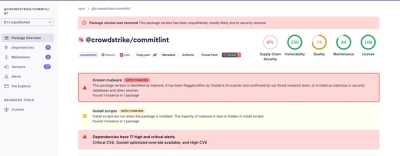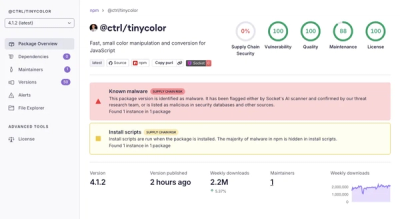Express Zod API








Start your API server with I/O schema validation and custom middlewares in minutes.
You can find the release notes in Changelog. Along with recommendations for migrating from
from v2 and from v1.
Why and what is it for
I made this library because of the often repetitive tasks of starting a web server APIs with the need to validate input
data. It integrates and provides the capabilities of popular web server, logger, validation and documenting solutions.
Therefore, many basic tasks can be accomplished faster and easier, in particular:
- You can describe web server routes as a hierarchical object.
- You can keep the endpoint's input and output type declarations right next to its handler.
- All input and output data types are validated, so it ensures you won't have an empty string, null or undefined where
you expect a number.
- Variables within an endpoint handler have types according to the declared schema, so your IDE and Typescript will
provide you with necessary hints to focus on bringing your vision to life.
- All of your endpoints can respond in a similar way.
- The expected endpoint input and response types can be exported to the frontend, so you don't get confused about the
field names when you implement the client for your API.
- You can generate your API documentation in a Swagger / OpenAPI compatible format.
How it works
Technologies
Concept
The API operates object schemas for input and output validation.
The object being validated is the combination of certain request properties.
It is available to the endpoint handler as the input parameter.
Middlewares have access to all request properties, they can provide endpoints with options.
The object returned by the endpoint handler is called output. It goes to the ResultHandler which is
responsible for transmission of the final response containing the output or possible error.
Much can be customized to fit your needs.

Quick start
Installation
yarn add express-zod-api
# or
npm install express-zod-api
Add the following option to your tsconfig.json file in order to make it work as expected:
{
"compilerOptions": {
"strict": true
}
}
Set up config
import { createConfig } from "express-zod-api";
const config = createConfig({
server: {
listen: 8090,
},
cors: true,
logger: {
level: "debug",
color: true,
},
});
See all available options here.
Create an endpoints factory
In the basic case, you can just import and use the default factory:
import { defaultEndpointsFactory } from "express-zod-api";
In case you need a global middleware, see Middlewares.
In case you need to customize the response, see Response customization.
Create your first endpoint
import { z } from "express-zod-api";
const helloWorldEndpoint = defaultEndpointsFactory.build({
method: "get",
input: z.object({
name: z.string().optional(),
}),
output: z.object({
greetings: z.string(),
}),
handler: async ({ input: { name }, options, logger }) => {
logger.debug("Options:", options);
return { greetings: `Hello, ${name || "World"}. Happy coding!` };
},
});
In case you want it to handle multiple methods use methods property instead of method.
Set up routing
Connect your endpoint to the /v1/hello route:
import { Routing } from "express-zod-api";
const routing: Routing = {
v1: {
hello: helloWorldEndpoint,
},
};
Start your server
import { createServer } from "express-zod-api";
createServer(config, routing);
You can disable startup logo using startupLogo entry of your config.
See the full implementation example here.
Try it
Execute the following command:
curl -L -X GET 'localhost:8090/v1/hello?name=Rick'
You should receive the following response:
{ "status": "success", "data": { "greetings": "Hello, Rick. Happy coding!" } }
Fascinating features
Middlewares
Middleware can authenticate using input or request headers, and can provide endpoint handlers with options.
Inputs of middlewares are also available to endpoint handlers within input.
Here is an example on how to provide parameters from the request path.
import { createMiddleware } from "express-zod-api";
const paramsProviderMiddleware = createMiddleware({
input: z.object({}),
middleware: async ({ request }) => ({
params: request.params,
}),
});
Then, you can connect your endpoint to a path like /user/:id, where id is a parameter:
const routing: Routing = {
user: {
":id": yourEndpoint,
},
};
By using .addMiddleware() method before .build() you can connect it to the endpoint:
const yourEndpoint = defaultEndpointsFactory
.addMiddleware(yourMiddleware)
.build({
handler: async ({ options }) => {
},
});
Here is an example of the authentication middleware, that checks a key from input and token from headers:
import { createMiddleware, createHttpError, z } from "express-zod-api";
const authMiddleware = createMiddleware({
input: z.object({
key: z.string().nonempty(),
}),
middleware: async ({ input: { key }, request, logger }) => {
logger.debug("Checking the key and token");
const user = await db.Users.findOne({ key });
if (!user) {
throw createHttpError(401, "Invalid key");
}
if (request.headers.token !== user.token) {
throw createHttpError(401, "Invalid token");
}
return { user };
},
});
You can connect the middleware to endpoints factory right away, making it kind of global:
import { defaultEndpointsFactory } from "express-zod-api";
const endpointsFactory = defaultEndpointsFactory.addMiddleware(authMiddleware);
You can connect as many middlewares as you want, they will be executed in order.
Refinements
By the way, you can implement additional validation within schema.
Validation errors are reported in a response with a status code 400.
import { createMiddleware, z } from "express-zod-api";
const nicknameConstraintMiddleware = createMiddleware({
input: z.object({
nickname: z
.string()
.nonempty()
.refine(
(nick) => !/^\d.*$/.test(nick),
"Nickname cannot start with a digit"
),
}),
});
Transformations
Since parameters of GET requests come in the form of strings, there is often a need to transform them into numbers or
arrays of numbers.
import { z } from "express-zod-api";
const getUserEndpoint = endpointsFactory.build({
method: "get",
input: z.object({
id: z.string().transform((id) => parseInt(id, 10)),
ids: z
.string()
.transform((ids) => ids.split(",").map((id) => parseInt(id, 10))),
}),
output: z.object({
}),
handler: async ({ input: { id, ids }, logger }) => {
logger.debug("id", id);
logger.debug("ids", ids);
},
});
Response customization
ResultHandler is responsible for transmission of the response containing the endpoint output or an error.
The defaultResultHandler sets the HTTP status code and ensures the following type of the response:
type DefaultResponse<OUT> =
| {
status: "success";
data: OUT;
}
| {
status: "error";
error: {
message: string;
};
};
You can create your own result handler by using this example as a template:
import {
createResultHandler,
createApiResponse,
IOSchema,
markOutput,
z,
} from "express-zod-api";
export const yourResultHandler = createResultHandler({
getPositiveResponse: <OUT extends IOSchema>(output: OUT) =>
createApiResponse(
z.object({
data: markOutput(output),
}),
"application/json"
),
getNegativeResponse: () => createApiResponse(z.object({ error: z.string() })),
handler: ({ error, input, output, request, response, logger }) => {
},
});
Then you need to use it as an argument for EndpointsFactory instance creation:
import { EndpointsFactory } from "express-zod-api";
const endpointsFactory = new EndpointsFactory(yourResultHandler);
Please note: ResultHandler must handle any errors and not throw its own. Otherwise, the case will be passed to the
LastResortHandler, which will set the status code to 500 and send the error message as plain text.
Non-object response
Thus, you can configure non-object responses too, for example, to send an image file.
You can find two approaches to EndpointsFactory and ResultHandler implementation
in this example.
One of them implements file streaming, in this case the endpoint just has to provide the filename.
The response schema generally may be just z.string(), but I made more specific z.file() that also supports
.binary() and .base64() refinements which are reflected in the
generated documentation.
const fileStreamingEndpointsFactory = new EndpointsFactory(
createResultHandler({
getPositiveResponse: () => createApiResponse(z.file().binary(), "image/*"),
getNegativeResponse: () => createApiResponse(z.string(), "text/plain"),
handler: ({ response, error, output }) => {
if (error) {
response.status(400).send(error.message);
return;
}
if ("filename" in output) {
fs.createReadStream(output.filename).pipe(
response.type(output.filename)
);
} else {
response.status(400).send("Filename is missing");
}
},
})
);
File uploads
You can switch the Endpoint to handle requests with the multipart/formdata content type instead of JSON.
Together with a corresponding configuration option, this makes it possible to handle file uploads.
Here is a simplified example:
import { createConfig, z, defaultEndpointsFactory } from "express-zod-api";
const config = createConfig({
server: {
upload: true,
},
});
const fileUploadEndpoint = defaultEndpointsFactory.build({
method: "post",
type: "upload",
input: z.object({
avatar: z.upload(),
}),
output: z.object({
}),
handler: async ({ input: { avatar } }) => {
return {
};
},
});
You can still send other data and specify additional input parameters, including arrays and objects.
Customizing logger
You can specify your custom Winston logger in config:
import winston from "winston";
import { createConfig } from "express-zod-api";
const logger = winston.createLogger({
});
const config = createConfig({ logger });
Usage with your own express app
If you already have your own configured express application, or you find the library settings not enough,
you can connect your routing to the app instead of using createServer().
import express from "express";
import { createConfig, attachRouting } from "express-zod-api";
const app = express();
const config = createConfig({ app });
const routing = {
};
const { notFoundHandler, logger } = attachRouting(config, routing);
app.use(notFoundHandler);
app.listen();
logger.info("Glory to science!");
Please note that in this case you probably need to parse request.body, call app.listen() and handle 404
errors yourself. In this regard attachRouting() provides you with notFoundHandler which you can optionally connect
to your custom express app.
Multiple schemas for one route
Thanks to the DependsOnMethod class a route may have multiple Endpoints attached depending on different methods.
It can also be the same Endpoint that handles multiple methods as well.
import { DependsOnMethod } from "express-zod-api";
const routing: Routing = {
v1: {
user: new DependsOnMethod({
get: yourEndpointA,
delete: yourEndpointA,
post: yourEndpointB,
patch: yourEndpointB,
}),
},
};
Customizing input sources
You can customize the list of request properties that are combined into input that is being validated and available
to your endpoints and middlewares.
import { createConfig } from "express-zod-api";
createConfig({
inputSources: {
get: ["query"],
post: ["body", "files"],
put: ["body"],
patch: ["body"],
delete: ["query", "body"],
},
});
Exporting endpoint types to frontend
You can export only the types of your endpoints for your frontend. Here is an approach:
export type YourEndpointType = typeof yourEndpoint;
Then use provided helpers to obtain their input and response types:
import { EndpointInput, EndpointResponse } from "express-zod-api";
import type { YourEndpointType } from "../your/backend";
type YourEndpointInput = EndpointInput<YourEndpointType>;
type YourEndpointResponse = EndpointResponse<YourEndpointType>;
Creating a documentation
You can generate the specification of your API and write it to a .yaml file, that can be used as the documentation:
import { OpenAPI } from "express-zod-api";
const yamlString = new OpenAPI({
routing,
version: "1.2.3",
title: "Example API",
serverUrl: "https://example.com",
}).getSpecAsYaml();
You can add descriptions and examples to any I/O schema or its properties, and they will be included into the generated
documentation of your API. Consider the following example:
import { defaultEndpointsFactory, withMeta } from "express-zod-api";
const exampleEndpoint = defaultEndpointsFactory.build({
input: withMeta(
z.object({
id: z.number().describe("the ID of the user"),
})
).example({
id: 123,
}),
});
See the example of the generated documentation
here
Known issues
Excessive properties in endpoint output
The schema validator removes excessive properties by default. However, Typescript
does not yet display errors
in this case during development. You can achieve this verification by assigning the output schema to a constant and
reusing it in forced type of the output:
import { z } from "express-zod-api";
const output = z.object({
anything: z.number(),
});
endpointsFactory.build({
methods,
input,
output,
handler: async (): Promise<z.input<typeof output>> => ({
anything: 123,
excessive: "something",
}),
});
Your input to my output
Do you have a question or idea?
Your feedback is highly appreciated in Discussions section.
Found a bug?
Please let me know in Issues section.
Found a vulnerability or other security issue?
Please refer to Security policy.








